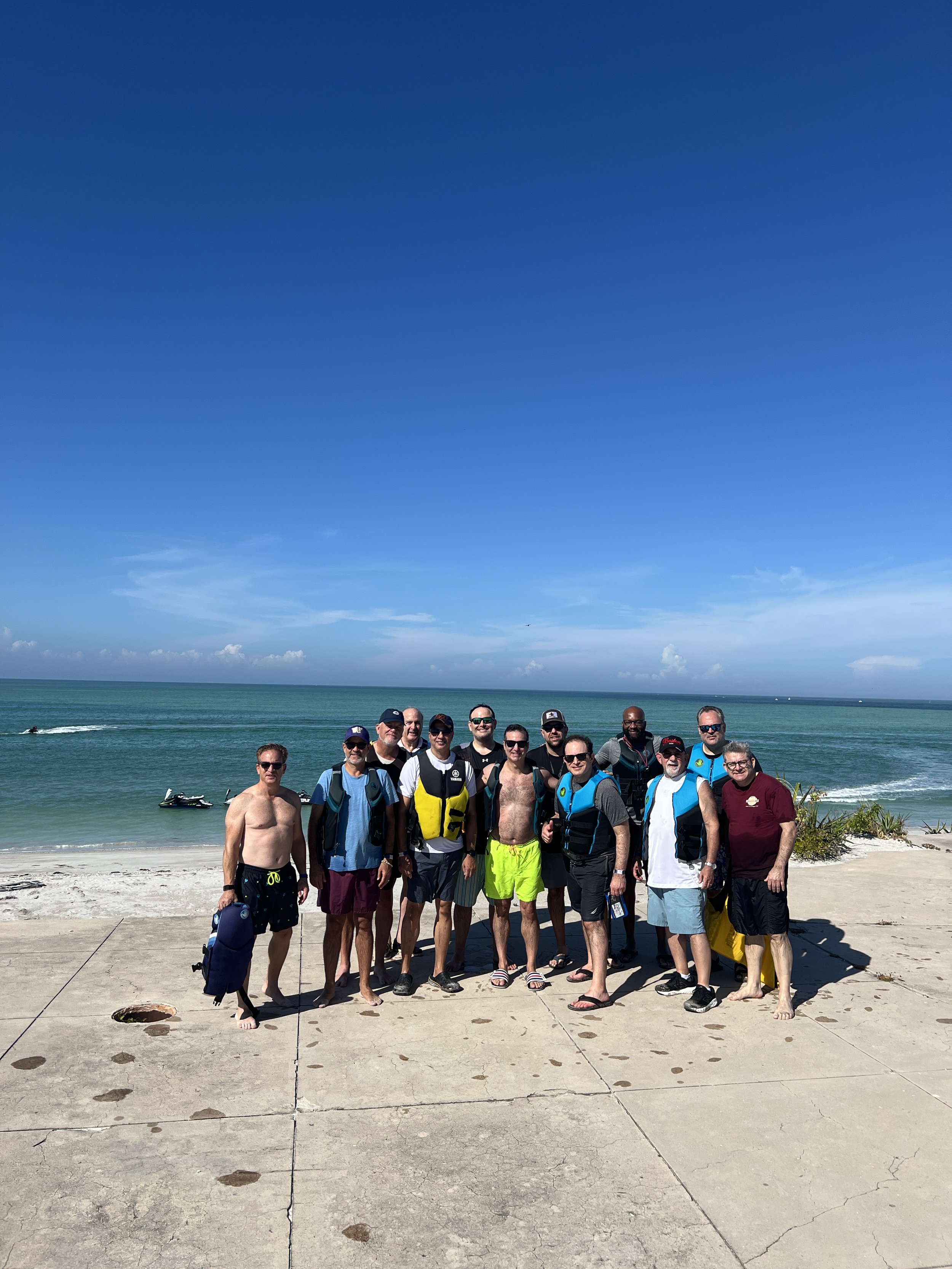Egmont Key Jet Ski Tour — turquoise waters, wildlife & island history
Guided jet ski adventures from St. Petersburg to Egmont Key. Swim in crystal shallows, step ashore to explore the lighthouse & Fort Dade ruins, and watch for dolphins and sea turtles along the way.
Why Egmont Key?
Egmont Key sits at the mouth of Tampa Bay: an island refuge with a historic lighthouse, Fort Dade ruins, white-sand beaches, and protected sandbars — perfect for a short, high-value jet ski trip.
Tour options
What’s included
- Experienced local guide & safety briefing
- Fuel, life jackets & safety equipment
- Time on the island to stretch, photograph & explore
- Complimentary photos & video highlights
Wildlife & photo opportunities
Look for bottlenose dolphins, sea turtles, shorebirds and (occasionally) manatees. The lighthouse and sandbars are perfect backdrops for sunrise & golden-hour photos — bring a waterproof camera.



About Egmont Key State Park
Egmont Key State Park is a rare blend of natural refuge and living history. Sitting at the mouth of Tampa Bay, Egmont Key’s story is anchored by the historic Egmont Key Lighthouse, first constructed in 1858 to guide vessels through the shallow, shifting approaches to the bay. Over the decades the lighthouse helped maritime traffic navigate treacherous shoals and played an essential role when the island became a military site.
In the late 1890s the U.S. Army established Fort Dade on Egmont Key as part of a coastal defense system. Fort Dade housed soldiers, families, and a small support community; remnants of brick roads, batteries, and buildings remain and are now slowly reclaimed by nature. During the Spanish–American War and into the early 20th century the fort was an active military installation guarding Tampa Bay.
Today the island is jointly managed as a protected wildlife refuge and state park. It supports nesting sea turtles and migratory birds, and the surrounding shallows are important habitat for dolphins, manatees, and sea turtles. Limited ferry access and strict protections preserve the island’s ecology and historical ruins.
Best Time to Visit Egmont Key
Egmont Key is visitable year-round, but conditions and wildlife activity change with the seasons. For cooler temperatures and clearer water, plan visits between October and May. Winter months (November–March) overlap with the manatee season, improving chances to spot manatees in nearby inlets and estuaries. Spring offers warm water and excellent visibility for swimming around sandbars.
Summer (June–August) brings heat and occasional afternoon thunderstorms; booking morning departures minimizes weather disruption and crowds. For photography, aim for 9–11AM for bright turquoise water shots and golden hour at sunset for dramatic sky and lighthouse photos. Early departures also mean calmer seas and higher probability of wildlife sightings.
What to Bring on Your Egmont Key Tour
Egmont Key is undeveloped — no stores or shade. Bring reef-safe sunscreen, a towel, a change of clothes, and a waterproof phone case or dry bag. Water shoes are recommended for exploring rocky or shell-strewn shorelines. We provide life jackets, bottled water, and safety equipment. A compact camera or phone is great for capturing the lighthouse and sandbar photos. Pack light and plan to leave no trace.
How to Get to Egmont Key
Egmont Key is accessible only by water — boat, kayak, or jet ski. While a limited ferry operates seasonally from Fort DeSoto, guided jet ski tours are the most flexible and adventurous option. From St. Petersburg, expect about a 20–30 minute jet ski ride depending on tides and route. Our guides handle navigation and safety so you can focus on sightings, photos, and the island itself.
Gallery & More Photos
A few favorite moments from recent tours — groups, couples, and island views.






FAQ
Do I need a boater’s license?
Florida requires operators born after 1988 to complete a boater safety course. We’ll confirm requirements at booking — bring ID and any certificate if you have one.
Is it family friendly?
Yes — children may ride tandem with an adult where safety limits allow. Check our booking policy or call for details.
What should I bring?
Swimsuit, towel, reef-safe sunscreen, waterproof phone case, light snack. We provide lifejackets and bottled water.

